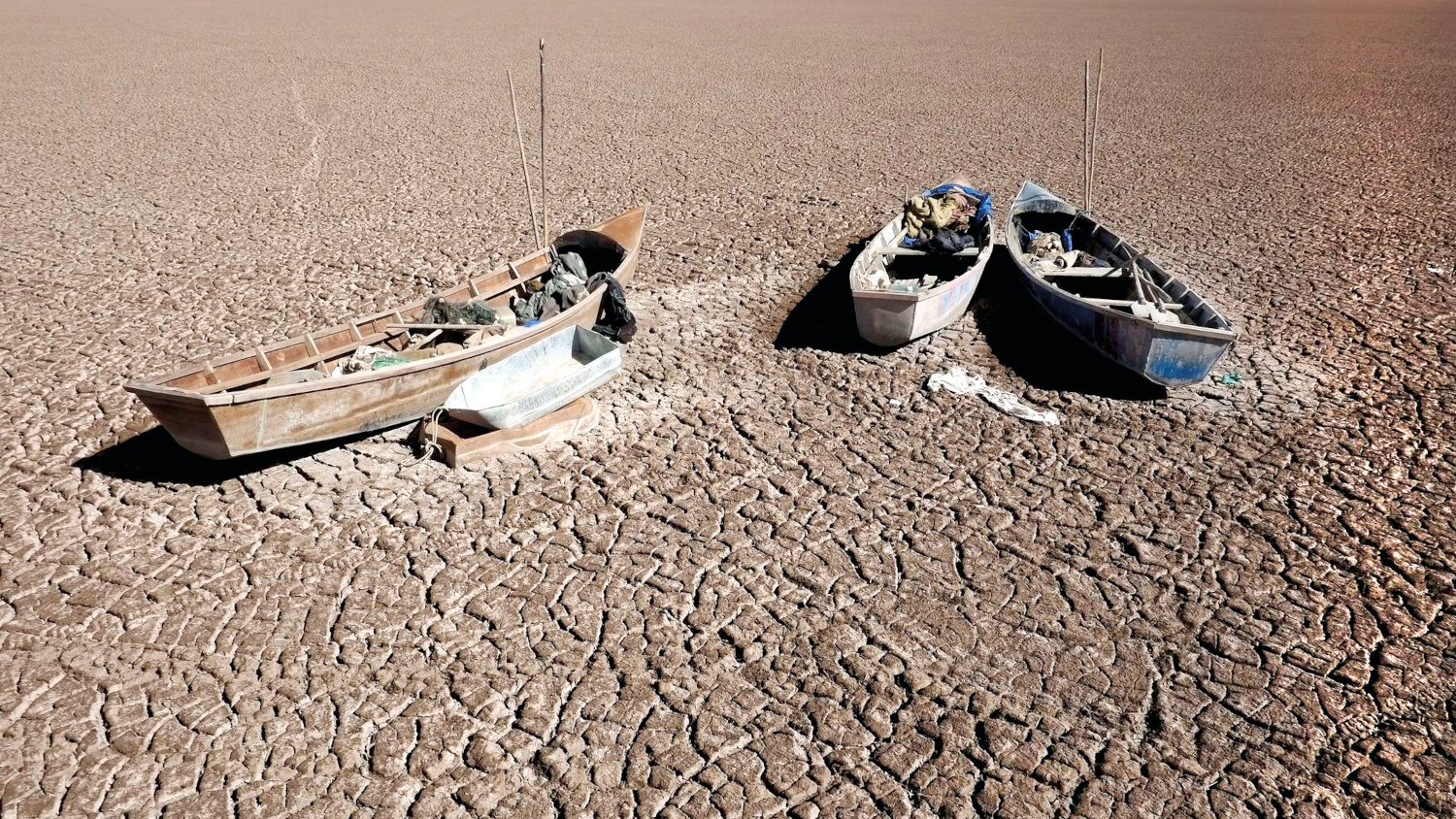Before it is too late, we must limit the disappearance of living or dead wetlands.
- Wetlands are very important ecosystems. More and more experts say that, being of little importance in society and in the imaginary of the citizens, pedagogical work must be done for them. In fact, they are essential ecosystems to ensure biodiversity, ensure the daily lives of citizens, as well as to reduce the climate emergency. Maleruski disappears at an alarming rate: Since 1970, 35 per cent of wetlands have disappeared. Although climate change is intensified by depletion, human activities are the basis for the disappearance of lakes, fangos, streams and mangroves.

Anthropocentrism causes animal and plant species to disappear at a rapid rate, without causing too much annoyance or imports into humans, badly. The NGO Nature Right states that every twenty minutes a species of fauna or flora disappears, 26,280 each year. But there are also other elements in silence that disappear without any virulence: wetlands, be they fangales, lakes, mangroves, swamps or marshes. Since 1970 35 per cent of the world ' s wetlands have disappeared. In recent times, its rate of extinction has ranged from 0.85 to 1.6 per cent per year, three times more than in the jungle. All the big and small are moving. Among the largest, the Aral Sea in Central Asia has increased from 68,000 km2 to 17,160 km2 in the last 60 years.
Although there have always been desiccations, since the year 2000 the pace has accelerated and it is being demonstrated that it is a direct consequence of climate warming: the increase in temperatures causes greater water evaporation. The lack of attention to the phenomenon is of concern to scientists, including some Dutch and Germans, authors of the opinion article The other side of sea level change from Communications Earth and Environment last year. “Although the drying of continental interiors is considered a major problem in terms of freshwater scarcity, its impact on the level of lakes will have many other profound consequences that are despised and affect the survival and economies of millions of people.” Both the United Nations Organisation and the Intergovernmental Panel on Climate Change (IPCC) call for strategies to limit the phenomenon to be carried out from now on. They have a significant example in their article to explain the concrete consequences of the phenomenon on biodiversity, on the population and on the local economy: The Caspian Sea, the largest lake in the world. For twenty years the depth has been cut by 1.5 metres and in the following 75 years it will be reduced by nine metres and in the worst by eighteen metres, reducing its width by 23 to 34%.
The Secretary General of the Urrego Ramsar Convention, Martha Rojas, is aware of the need to integrate this phenomenon into political decisions: “Lawmakers must integrate this reality into policy programs, invest in wetland survival. We have to guide education on the importance of a rapidly disappearing ecosystem, because without wetlands we all risk.” This wetland agreement entered into force in 1975 and completes the list of areas of great importance to be protected, which represent 15 per cent, including the Mundaka-Gernika estuary, the Salburua wetland and Lake Pitillas, among others.
Undoubtedly, it is a question of classifying them as “protected spaces”, as, by default, they are disappearing. Ignoring data from Euskal Herria, let us suppose that in the French State two thirds of the wetlands have disappeared in the twentieth century and in recent years the trend has been the same. They are absorbed by both the modernization of the crop and the urbanization.
Great wealth, behind the bad reputation
Barriers to production, obstacles to movement, source of beds and bacterial diseases, wetlands have a bad reputation and their disappearance has been the logic of many years. However, bad reputation is also “indispensable”.
Firstly, because they are at the centre of biodiversity. Both freshwater and food sources, as well as being necessary for human survival, have 40 per cent of the world's species needed to live and reproduce, with 25 per cent of these endangered species being endangered.
They are also needed, although they are also methane emitters, to reduce climate change. Significant number: Peatlands that account for 3% of the world's surface retain 30% of the world's CO2. In addition, they are also necessary to protect the climate from the consequences of the emergency, either because in the case of floods they retain water, or in the case of aggregates, they slowly release their reserves in the soil to offer the water that living beings need.
But, like the Aral
Sea or the Caspian Sea, the disappearances of the large ones cannot be understood only in the context of climate change. The report En Bolivie, las orphelins du Poopó pleurent leur lac disparu (Bolivia, the orphans of Poopó mourning the disappearance of their lake) clearly explains that, in addition to climate change, there are other causes, largely related to human activities. One of the pillars of desiccation is the diversion of water by irrigation channels. What happens is that, at a reduced scale, if the deviation is not harmful to meet the needs of a couple of dwellings, its large-scale execution is destructive. Unfortunately, this happened in the second largest lake in Bolivia: in recent years, with the objective of taking care of health and eating less meat, the rest of the world consume the quinoa cereal, they have industrially driven production to respond to it, absorbing huge amounts of water.
On the other hand, the problem is the mines of metals such as nickel, copper, cadmium, plomu, zinc, etc., also used for our new technologies such as computer, telephone or any other. In addition to contaminated water, it can be deduced that the waste is huge: “There is also the problem of sediments, which block streams, drowning vegetation, destroying fauna, flora and aquatic life. They are deposited in the lake pit, with timid depth, and channeling the water heat and therefore evaporation”, can be read in the report. According to estimated data from 2014, 2,000 tons of waste were dumped each day into Lake Poopó, discharged by the stream Desaguadero, which hampers the industrial area.
And with the disappearance of Poopó the inhabitants of the area disappeared, who had to witness that they had no way of fishing and of responding to thirst. Memory of his name, until then the locals were called “water citizens”. They are now known as Bolivia's first climate refugees.












